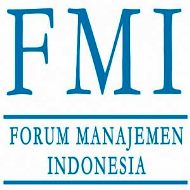Pengembangan Sumber Daya Manusia yang Unggul Berbasis Pumping-HR Model
DOI:
https://doi.org/10.32832/jm-uika.v7i2.1110Keywords:
Evaluation Program, Human Resources Development, Pumping HR based training model, IPB university, Human Capital.Abstract
This study is an evaluative framework of Stufflebeam CIPP evaluation model, with evaluation components: context, input, process and product, which involve trainees in IPB human resource development program for 3 years running.Human resource development training program based on the model of IPB pumping is a useful program for employment and self, which have an impact on performance. In the context of this program supports the goals of human resource development IPB. In this program input is designed according to the needs of HR IPB to (1) the strengthening of values and beliefs, (2) the strengthening of competence, and (3) encourage the successful behavior in terms of responsibility, professionalism and friendliness of the work. In the preferred process of this program and fun for participants and products (output and outcome) can benefit from this program and give a clear impact to the performance of the employeeReferences
Agung, A.M Lilik. Human Capital Competencies. Jakarta: ElexMedia Komputindo, 2007
Baron, Angela & Armstrong, Michael. HCM; Achieving Added Value Through People. London & Philadelphia: Kogan Page, 2007.
Lance A Berger & Dorothy R Berger. The Handbook of Best Practices on Talent Management terjemahan Kumala Insiwi Suryo. Jakarta: Penerbit PPM, 2007.
Djaali dan Muljono, Pudji. Pengukuran dalam bidang Pendidikan. Jakarta:Grasindo, 2008.
Detty, Regina, et al. Evaluasi Ke-Efektifan Program Pelatihan Know Your Customer & Money Laundering Di Bank X Bandung, proceedings National Conference on Management Research 2008, http://asp.trunojoyo.ac.id/ wp-content/uploads/2014/03/EVALUASI-KE-EFEKTIFAN-PROGRAM-PELATIHAN.. Regina-Dety-dkk.pdf (diakses 21 Januari 2016).
Goodman, M. Iceberg model. ASCD Online, http://www.ascd.org/ASCD/ pdf/journals/ ed_lead/el200910_kohm_iceberg.pdf (diakses tanggal 27 November 2014).
Gynanjar, Ary. Emotional Spiritual Quotient. Jakarta: Arga, 2012.
IPB, Strategic Plan Bogor Agricultural University. Bogor, 2013
______Rencana Strategis SDM IPB Menuju Perguruan Tinggi Berbasis Riset Kelas Dunia. Bogor: Direktorat SDM IPB, 2012
______Pedoman Pengelolaan SDM IPB. Bogor: Direktorat SDM IPB, 2013.
Kirkpatrick, Donald L. K. James DK. Evaluating Training Programs. Third Edition. The Four Levels. San Francisco CA: Berrett-Koehler Publishers, 2009.
Noe, Raymond A, Hollenbeck, John R, Gerhart, Barry dan Wright, Patrick M. Manajemen Sumber Daya Manusia, Mencapai Keunggulan Bersaing terjemahan: David Wijaya. Jakarta: Salemba Empat, 2010
Palan, R. Competency Management. Jakarta: PPM, 2009.
Poniman, Farid dan Hadiyat, Yayan. Manajemen HR STIFIN Terobosan Mendongkrak Produktivitas. Jakarta: Gramedia, 2015.
Stufflebeam, Daniel L and Coryn, Chris L.S. Evaluation Theory, Models, & Applications. San Francisco: Jossey-Bass, 2014.
Wirawan. Evaluasi: Teori, Model, Standar, Aplikasi, dan Profesi. Jakarta: Rajawali Pers, 2012.
Yusuf, Nanang Qosim. The 7 Awareness: 7 Keasadaran Hati dan Jiwa Menuju Manusia Diatas Rata-Rata. Jakarta: Grasindo, 2006.
Downloads
Published
How to Cite
Issue
Section
License
Authors who publish with this journal agree to the following terms:
- Authors retain copyright and grant the journal right of first publication with the work simultaneously licensed under a Creative Commons Attribution-NonCommercial-ShareAlike 4.0 International License that allows others to share the work with an acknowledgement of the work's authorship and initial publication in this journal.
- Authors can enter into separate, additional contractual arrangements for the non-exclusive distribution of the journal's published version of the work (e.g., post it to an institutional repository or publish it in a book), with an acknowledgement of its initial publication in this journal.
- Authors are permitted and encouraged to post their work online (e.g., in institutional repositories or on their website) prior to and during the submission process, as it can lead to productive exchanges, as well as earlier and greater citation of published work (See The Effect of Open Access).











